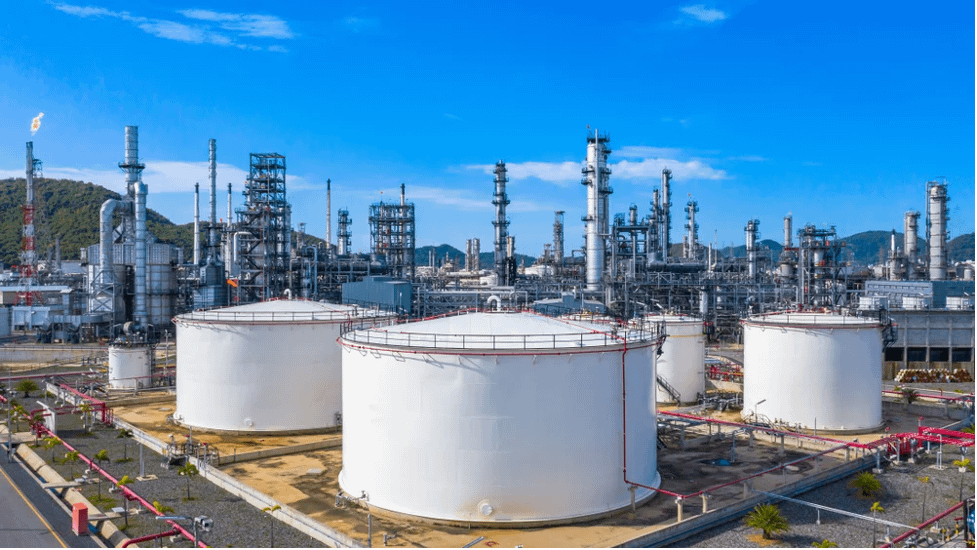Oil refineries and petrochemical plants play vital roles in today’s modern society. National economies depend on their functioning as they compose many of our daily necessities. While oil refineries and petrochemical plants serve different purposes, they are both dependent, especially in the manufacturing of petrochemicals. Petrochemicals, which we will discuss in detail, are present in many of the plastics, rubbers, and cosmetics that we use. In this article, we will tackle the differences between these two types of industrial complexes as well as their history.
Refinery vs petrochemical plant
Oil refineries and petrochemical plants have different and common purposes. Let us look at what they are and what are their production processes.
What is the difference between a petrochemical plant and a refinery?
| Petrochemical plant | Refinery |
| A petrochemical plant is a facility that produces chemical substances made from petroleum and natural gases.
Manufacturing petrochemicals produces derivatives that are used as raw materials to produce end-consumer goods. Some of these derivatives include ethylene, propylene, and benzene.
|
A refinery is an industrial facility meant to refine or process a substance. The most common refineries are oil refineries, where crude oil is extracted, then distilled to be heated and converted into petroleum products.
Crude oil, also known as petroleum, is a naturally found substance made from fossilized remains of animals. Once extracted and refined, crude oil can be transformed into numerous products, such as feedstock used to produce petrochemicals and gasoline used to fuel vehicles.
|
-
Oil refinery process
After crude oil is extracted and transferred to an oil refinery, the refining process contains contain three essential steps: separation, conversion, and treatment.
The separation process consists of piping crude oil through hot furnaces creating liquids and vapors that are moved into distillation units. Distillation units can be found in all refineries. During the distillation phase, liquids and vapors are separated into petroleum components called fractions. These types of petroleum components are separated based on the level of heat to which they are boiled.
After the distillation process, oil is then processed into lighter petroleum products like gasoline. These distilled fractions then become intermediate components that turn into finished products. In the process of conversion, the most common method used is called cracking. This procedure uses heat, pressure, catalysts, and sometimes hydrogen to crack dense hydrocarbon molecules into lighter ones. More complex refineries can have one more cracker. Other methods of cracking include alkylation and reforming.
The third and final step in refining oil is the treatment which also includes methods of storage. The treatment process consists of monitoring petroleum products and their materials. These products are then carefully stored in large tanks.
-
Petrochemical plant
Petrochemicals are chemicals built from petroleum and natural gas. These are made from hydrocarbons. Petrochemical products are used to produce daily necessities such as plastics and rubbers. Some of these products include ethylene, propylene, and benzene. It is estimated that about 5% of the oil and gas consumed each year is needed to make all petrochemical products.
Petrochemicals are low in cost, making them an efficient solution to produce most of our everyday goods. Petrochemical products can be divided into olefines (ethylene and propylene) and aromatics (benzene and toluene). Both categories of petrochemicals use oil refineries and are made through the process of cracking.
Products and services from oil refineries and petrochemicals
Products from oil refineries include gasoline, diesel fuel, and jet fuel made from light crude oil by distillation. Petrochemical products can be found in plastics, rubbers, food, cosmetics, and even medical supplies. Leading petrochemical firm Anchorage Investments uses state-of-the-art technologies to produce petrochemical products domestically and regionally. Petrochemicals are also found in many of today’s modern energy systems, including solar panels, wind turbine blades, batteries, thermal insulation for buildings, and electric vehicle parts.
The history of refineries and petrochemicals

The oil and petrochemical industries have a history that dates to the 19th century, resulting in a 150-year-old oil and chemical production journey. The use of oil started when investors decided to switch from whale oil to a lighter alternative. Since then, continuous developments in the oil and gas industry have made petroleum an increasingly crucial part of our modern lives.
The first modern oil refinery can be found in Pennsylvania, U.S., where simple heat sources were used to apply the separation process. The first alternative to whale oil was kerosene which fueled lamps and lighting.
Other petroleum products began to be used as new modes of transportation were being developed and required sources of fuel such as gasoline, diesel, and jet fuel. The demand for transportation fuel saw an increase, particularly during World War I. During this time, demand for other non-fuel products rose, giving birth to petrochemicals. Petrochemicals became intrinsic to industrial processes to make everyday necessities.
Solutions for the oil refining and petrochemical industries
Corrosion is one of the notable issues in the oil, gas, and petrochemical industry in upstream applications, which include off-shore drilling production and on-shore production facilities) as well as downstream applications (refineries, chemical/petrochemical plants, gas processing, and storage facilities).
Long-lasting coating solutions that effectively safeguard these crucial assets are required by the industry’s need to reduce capital costs and the requirement to follow tough environmental standards. These obstacles can be met by high-performance coating systems.
In conclusion, oil refineries and petrochemical plants are two types of facilities part of a common production process. Oil refineries date back to the 1800s, and their products continue to be essential in making today’s everyday goods. Using separation, conversion, and treatment processes, petroleum products such as gasoline and jet fuel are produced at different heat levels to create high-value and low-value products. Petroleum products combined with natural gases are also used to produce petrochemicals which become raw materials for end-used commodities.
